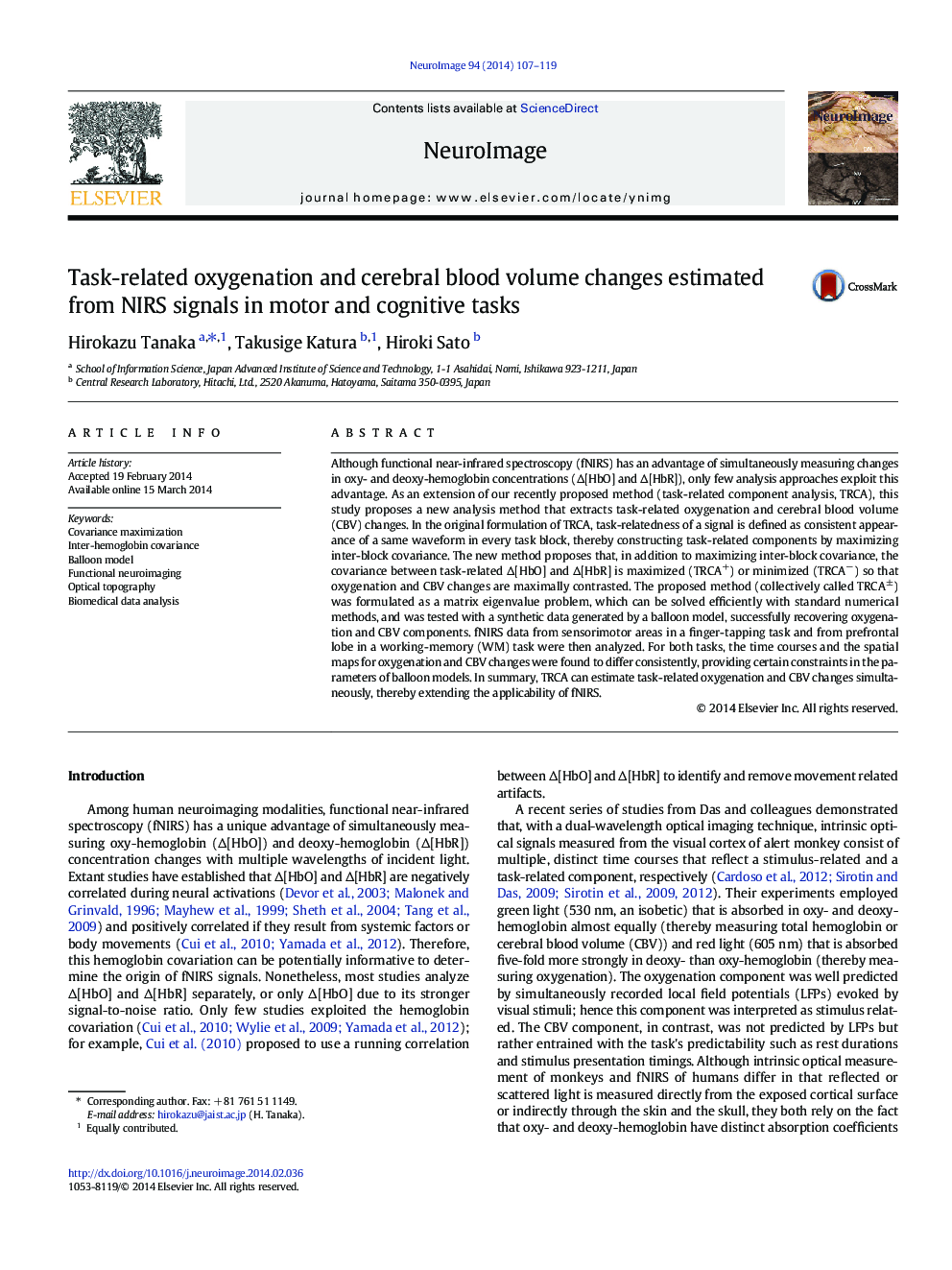| Article ID | Journal | Published Year | Pages | File Type |
|---|---|---|---|---|
| 6027494 | NeuroImage | 2014 | 13 Pages |
Abstract
Although functional near-infrared spectroscopy (fNIRS) has an advantage of simultaneously measuring changes in oxy- and deoxy-hemoglobin concentrations (Î[HbO] and Î[HbR]), only few analysis approaches exploit this advantage. As an extension of our recently proposed method (task-related component analysis, TRCA), this study proposes a new analysis method that extracts task-related oxygenation and cerebral blood volume (CBV) changes. In the original formulation of TRCA, task-relatedness of a signal is defined as consistent appearance of a same waveform in every task block, thereby constructing task-related components by maximizing inter-block covariance. The new method proposes that, in addition to maximizing inter-block covariance, the covariance between task-related Î[HbO] and Î[HbR] is maximized (TRCA+) or minimized (TRCAâ) so that oxygenation and CBV changes are maximally contrasted. The proposed method (collectively called TRCA±) was formulated as a matrix eigenvalue problem, which can be solved efficiently with standard numerical methods, and was tested with a synthetic data generated by a balloon model, successfully recovering oxygenation and CBV components. fNIRS data from sensorimotor areas in a finger-tapping task and from prefrontal lobe in a working-memory (WM) task were then analyzed. For both tasks, the time courses and the spatial maps for oxygenation and CBV changes were found to differ consistently, providing certain constraints in the parameters of balloon models. In summary, TRCA can estimate task-related oxygenation and CBV changes simultaneously, thereby extending the applicability of fNIRS.
Related Topics
Life Sciences
Neuroscience
Cognitive Neuroscience
Authors
Hirokazu Tanaka, Takusige Katura, Hiroki Sato,
